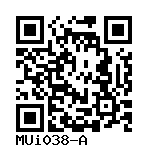EYS mutation
MUi038-A
General
Cell Line |
|
| hPSCreg name | MUi038-A |
| Cite as: | MUi038-A (RRID:CVCL_E4E2) |
| Alternative name(s) |
EYS mutation
|
| Cell line type | Human induced pluripotent stem cell (hiPSC) |
| Similar lines |
LUMCi056-A-1 (LUMC0128iCRB01 heterozygote CRISPR corrected isogenic clone 02, iso02LUMC0128iCRB01) Donor's gene variants: CRB1, CRB1 Donor diseases: Retinitis Pigmentosa LUMCi055-A (CRB1 patient 117 compound heterozygous 2983G>T p.(Glu995*) c.1892A>G, p.(Tyr631Cys), LUMC0117iCRB01) Donor's gene variants: CRB1, CRB1 Donor diseases: Retinitis Pigmentosa LUMCi056-A (CRB1 patient 128 compound heterozygous c.2843G>A p.(Cys948Tyr) and c.3122T>C p.(Met1041Thr), LUMC0128iCRB01) Donor's gene variants: CRB1, CRB1 Donor diseases: Retinitis Pigmentosa UNEWi002-A (UNEW002Ai, PRPF31 AW) Donor's gene variants: PRPF31, PRPF31 Donor diseases: Retinitis pigmentosa ESi077-A (CABi001-A, PRPF31-MiPS4F3) Donor's gene variants: PRPF31, PRPF31 Donor diseases: Retinitis Pigmentosa |
| Last update | 16th March 2024 |
| User feedback | |
Provider |
|
| Generator | Mahidol University (MU) |
External Databases |
|
| BioSamples | SAMEA115419503 |
| Cellosaurus | CVCL_E4E2 |
General Information |
|
| Publications |
|
| * Is the cell line readily obtainable for third parties? |
Yes Research use: allowed
Clinical use: not allowed
Commercial use: not allowed
|
Donor Information
General Donor Information |
|
| Sex | male |
Phenotype and Disease related information (Donor) |
|
| Diseases | A disease was diagnosed.
|
External Databases (Donor) |
|
| BioSamples | SAMEA115419502 |
Ethics
| Has informed consent been obtained from the donor of the embryo/tissue from which the pluripotent stem cells have been derived? | Yes |
| Was the consent voluntarily given? | Yes |
| Has the donor been informed that participation will not directly influence their personal treatment? | Yes |
| Can you provide us with a copy of the Donor Information Sheet provided to the donor? | Yes |
| Do you (Depositor/Provider) hold the original Donor Consent Form? | Yes |
| Please indicate whether the data associated with the donated material has been pseudonymised or anonymised. | anonymised |
| Does consent explicitly allow the derivation of pluripotent stem cells? | Yes |
| Does consent prevent CELLS DERIVED FROM THE DONATED BIOSAMPLE from being made available to researchers anywhere in the world? | No |
| How may genetic information associated with the cell line be accessed? | Controlled Access |
| Will the donor expect to receive financial benefit, beyond reasonable expenses, in return for donating the biosample? | No |
| Has a favourable opinion been obtained from a research ethics committee, or other ethics review panel, in relation to the Research Protocol including the consent provisions? | Yes |
| Name of accrediting authority involved? | Mahidol University Central Institutional Review Board (MU-CIRB) |
| Approval number | MU-CIRB 2019/316.0912 |
| For generation of the cell line, who was the supplier of any recombined DNA vectors or commercial kits used? |
hIPSC Derivation
General |
|
| Source cell line name | hematopoietic stem cells |
| Source cell type |
Primitive blood cells derived from embryonic mesenchyme capable of differentiating into any of the blood cell line progenitor cells (erythroblasts, young granulocytic series cells, megakaryocytes, etc.)
Synonyms
|
Reprogramming method |
|
| Vector type | Non-integrating |
| Vector | Episomal |
| Is reprogramming vector detectable? |
No |
| Methods used |
PCR
|
Vector free reprogramming |
|
Other |
|
| Derived under xeno-free conditions |
Unknown |
| Derived under GMP? |
Unknown |
| Available as clinical grade? |
Unknown |
Culture Conditions
| Medium |
Essential 8™
|
Characterisation
Analysis of Undifferentiated Cells
Differentiation Potency
In vitro directed differentiation
In vitro directed differentiation
Genotyping
Karyotyping (Cell Line) |
|
| Has the cell line karyotype been analysed? |
Yes
Normal male karyotype (46, XY)
|
Other Genotyping (Cell Line) |
|


Login to share your feedback, experiences or results with the research community.